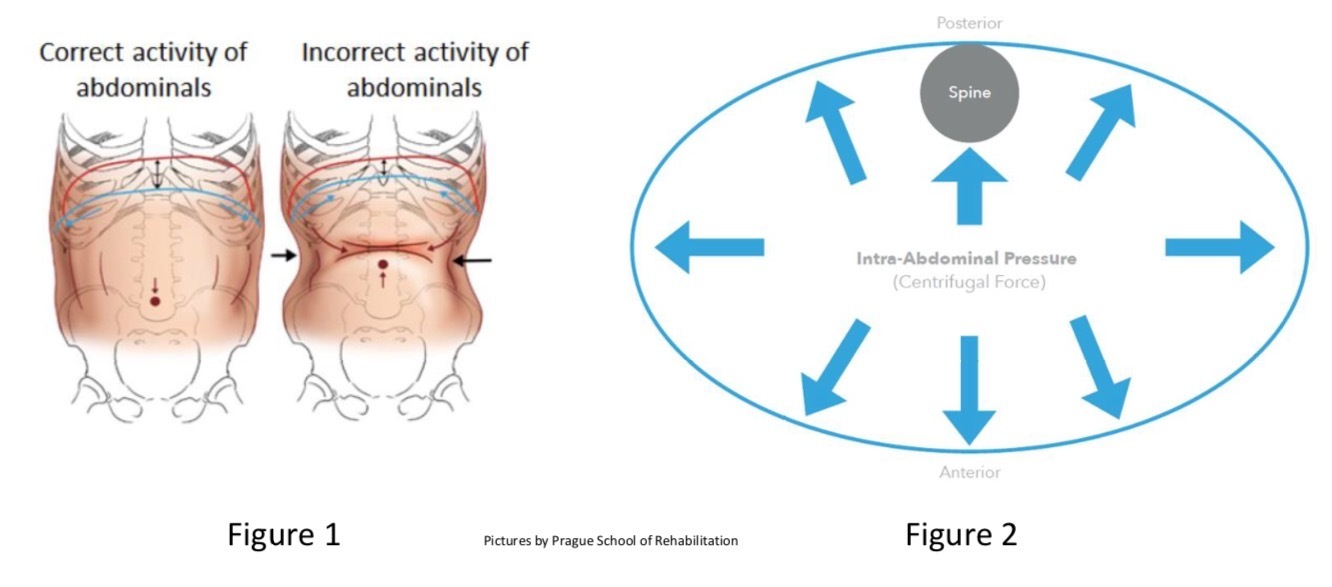
When it comes to treating lower back pain, one of the first things we review with our patients is their ability to create intra-abdominal pressure (IAP) in static and dynamic positions. What that means in regular terms is can the individual create a solid "brace" around the spine when they are not moving and when they are moving. This ability may seem way too simple to help with lower back pain, however, most are either doing it incorrectly (subconsciously) or have a limiting factor that makes it harder to perform such as pelvic floor issues, hernias, or diastasic recti. In this blog, we will review the importance of bracing mechanics and how learning how to properly brace can reduce your risk of lower back pain and help you when you have lower back pain.
To understand further what we are talking about when we discuss IAP, here is an analogy we use with our patients to get a better picture of building IAP. If you think of an unopened soda can, there is a wall of aluminum around it, below it, and on top. There is also fluid inside, however, if you attempt to crush the soda can either axially (from the top down) or from the sides you will most likely be unable to crush it. Why is that? Well, the carbonated fluid inside results in excessive pressure making it strong and sturdy.
Now if you open the cap, you can easily crush the can because the pressure is released. Now think of what most people consider the "core" and how this relates to the soda can. You have the abdominal muscles in the front, the obliques on the side, all the muscles of the back, the pelvic floor on the bottom, and the diaphragm on top. In the center of the core is the spine. The spine and the discs can absorb force, however, it is only meant to take on so much force absorption. If that load increases too much, things in the spine become affected and often painful over time. Now when you take a deep breath in before a heavy lift, what you are doing is bringing airflow into the lungs, dropping the diaphragm down, expanding the lungs, and creating outward pressure against the previously discussed core musculature. This is what we call intra-abdominal pressure. This is what creates a strong brace around the spine and resists the forces dissipating to the spine.

How do people get this wrong? Let's discuss. Another easy analogy to picture is an hourglass figure and a tight and wide ball. If you were to take on a heavyweight axially (top-down), would you want the hourglass shape or a wide ball? Chances are you'd pick the wide ball to have a sturdy stance and accept the force better. This is where people mess up and it creates lower back issues. What happens when people brace incorrectly and position themselves incorrectly is they end up in an extension-biased position with their chest puffed out and lower back extended. This essentially creates the hourglass figure and the pressure is distributed inefficiently throughout the core. You will see it all the time in the gym. People are taking deep breaths before lifting and you'll see their chest rise and puff out or their butt poke back.
How we combat this is to practice proper diaphragmatic breathing and bracing mechanisms. We first do this by placing the patient in a face-up position on the ground with their legs bent. Place one hand on the chest and one hand on the lower abdominal region close to the pubic bone. From there we ask them to take a big BELLY breath into the hand lower on the abdomen and to not allow the chest to rise. Seems easier than it actually is. We want the first part of the movement to come from the lower abdomen as if the belly is pressing out equally in all directions and the chest should not rise. We tell people they should feel it somewhat in the pelvic floor region as if it is expanding into their groin as their lower belly sticks out. Again, the pressure should feel as though it is creating tension buildup front and back and to the sides.
Here is where it gets difficult. Most people can get this in a static position when there is no load and they can really focus on it. After some practice, you can perform this with more dynamic movements such as a dead bug, glute bridges, and bodyweight squats. The real challenge is not just perfecting these bracing mechanisms, but also maintaining these braces under load and when fatigued. We get that it is annoying at first to think of this and practice, however, like any movement pattern, it takes time to understand and perfect.
With great practice, one can easily learn how to reduce their risk of lower back pain and help their current lower back pain as less forces will be incorrectly distributed throughout the spine and less stress will accumulate on certain structures.
If you are in the Tampa, St. Pete, or Clearwater area and are dealing with lower back pain, Strength & Spine Chiropractic is the place for athletes and health-oriented individuals looking for long-term solutions to their pain. Schedule your free discovery visit today to learn more about how we can help you!
-Dr. Cameron Gholampour
